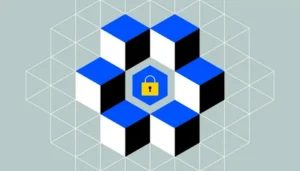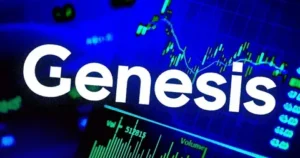How does the blockchain begin with the creation of the first block? On January 3, 2009, someone using Satoshi Nakamoto’s identity mined 50 Bitcoins (BTC) from the Genesis block.
The title of an article published in the British Times and included in its hash was “Chancellor on the brink of a second bailout for banks.” The article focused on problems plaguing the UK banking industry and how the government is trying to fix them. Several people have suggested that Satoshi inserted this headline to highlight the weaknesses of conventional finance.
Genesis Block Blockchain’s Foundation
In blockchain, the first block, known as the genesis block, marks the beginning of the network and serves as its foundation. It provides a stable and immutable base for all subsequent transactions and blocks. The blockchain network would not function or grow without the genesis block.
This block records the first data and defines the blockchain’s structure and rules, including consensus processes and the initial distribution of coins.
Beyond its practical application, the Genesis Block Foundation represents a technological necessity and the inception of a novel digital ecosystem. It is the building block of all blockchains, including Bitcoin, Ethereum, and others.
It provides a stable, immutable base that all subsequent blocks can reference, guaranteeing the network’s integrity. The blockchain’s immutability ensures tamper-proofness from the outset, providing comfort to both users and developers. With the basics of the genesis block covered, let’s examine its most salient features.
Foundation of Blockchain Security

The Genesis block’s unique property sets it apart from all other blocks in the chain. This property prevents manipulation because changing it would break the chain. Because it is the foundation of the blockchain’s protection against assaults and fraud, its security role is critical. To top it all off, the genesis block is the network’s first validator, checking that all subsequent blocks adhere to the parameters and regulations it sets out.
Another important characteristic is that the genesis block plays an important part in creating the economic structure of the blockchain. The genesis block establishes the rules for the distribution and future generation of coins and specifies their initial supply at the start. This early configuration shapes the network’s economic model, influencing currency mining, trading, and spending.
Genesis Block Blockchain’s Foundation
The genesis block is a fundamental building component of every newly launched blockchain network. The blockchain’s developers manually construct this block to build the groundwork for the network’s future operations, deciding crucial aspects like the initial coin supply, transaction regulations, and consensus process.
Genesis blocks are unique because they inherit no properties from previous blocks. After the network runs, blocks build upon the foundational block to complete the blockchain. This first block guarantees the blockchain’s integrity and security by laying the groundwork for correctly validating all subsequent blocks.
Genesis Block Essential for Blockchain

The idea that the genesis block is mostly a technical requirement that doesn’t affect the blockchain’s functionality is one of the most common misunderstandings regarding it. Actually, it’s significantly more crucial. Crucial features, including the supply of coins, rules for consensus, and validation of transactions, are defined, and the tone for the network is established by it.
Any error in its construction could affect the entire blockchain, so starting it right is the biggest challenge. The genesis block defines elements that impact the future and security of the entire blockchain, including the number of currencies, transaction regulations, and consensus processes. It also guarantees the validity of all subsequent blocks by serving as the network’s initial checkpoint.
Genesis Block: Satoshi’s First Bitcoin Reward
We already established that Satoshi Nakamoto, the anonymous creator of Bitcoin, was responsible for creating the Genesis Block. Not only was the Genesis Block the first of its kind, but it also contained the first transaction, or “reward block,” which rewarded Satoshi with the first coins for developing the system. This transaction laid the groundwork for the whole network.
Ethereum Genesis Block Network Foundation
The Ethereum network was established on July 30, 2015, when the genesis block was created. Not only did it determine the initial distribution of ETH tokens, but it also established the fundamental characteristics of Ethereum. Like Bitcoin, the Ethereum network guarantees the legitimacy of every subsequent transaction by leaving the Genesis block untouched.
Each blockchain network has its genesis block, which establishes its initial characteristics, coin supply, and consensus processes. These blocks also act as the network’s foundation. From the beginning, these Genesis blocks guarantee that every blockchain is secure and effective.
[sp_easyaccordion id=”4024″]





